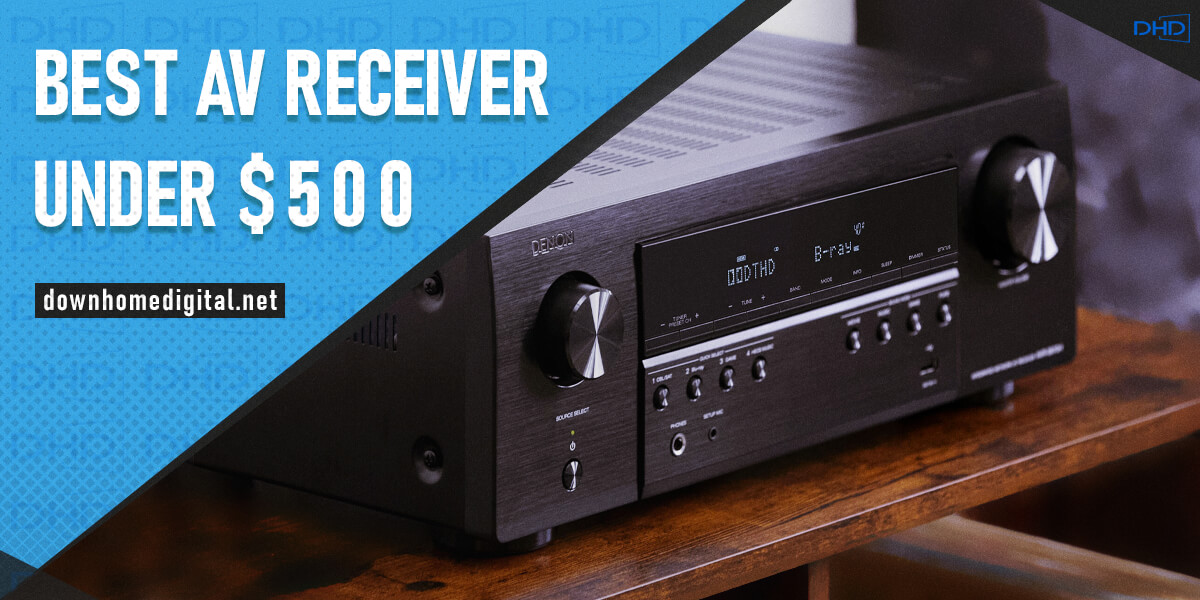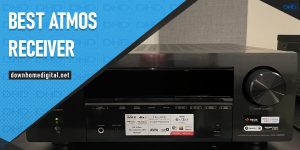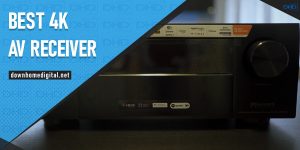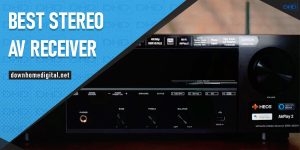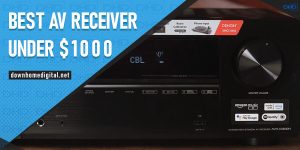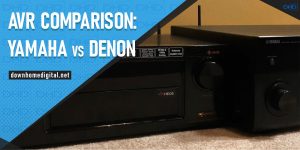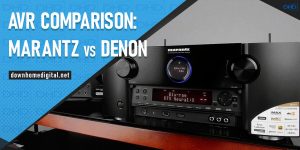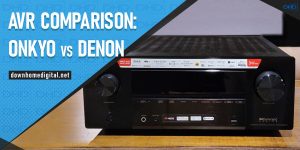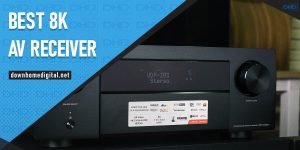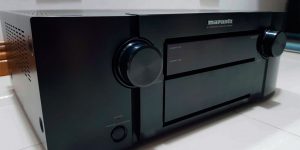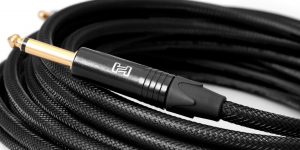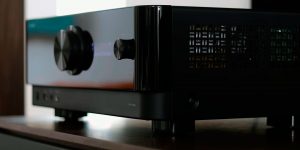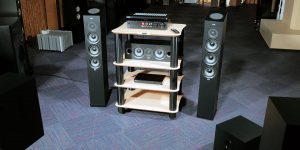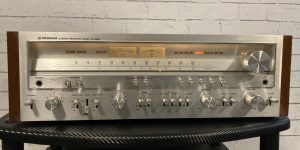Fortunately, the modern audio and video equipment market is developing very rapidly, so useful features and technologies, which were available only in top models a few years ago, can now be found in devices of medium and even budget levels. That is why I offer you my review, where you can choose the best AV receiver under 500 dollars. Today devices in this category have enough power; many of them really sound great, are equipped with various additional features, and can satisfy the needs of many users.
The most reputable receiver manufacturers release many excellent units yearly without crossing the threshold of 500 bucks. I’m deep into this subject and am ready to name receivers in this price range that you should look at. In this review, I have assembled my personal favorites that are great value for money. The main thing to keep in mind while choosing a suitable variant is to determine what features play a major role in your particular case.

AV receiver under $500 comparison table
| Name | Channels | Power output | HDMI in/out | Bluetooth/Wi-Fi | Review |
|---|---|---|---|---|---|
| Denon AVR-S670H best overall | 5.2 | 75W/8 Ohm, 100W/6 Ohm | 6/1 | yes/yes | Review |
| Yamaha RX-V4A also great | 5.2 | 80W/6 Ohm | 4/1 | yes/yes | Review |
| Sony STR-DH790 | 7.2 | 90W/6 Ohm | 6/2 | yes/no | Review |
| Onkyo TX-SR494 | 7.2 | 80W/8 Ohm | 4/1 | yes/no | Review |
The most important tips on choosing the right receiver
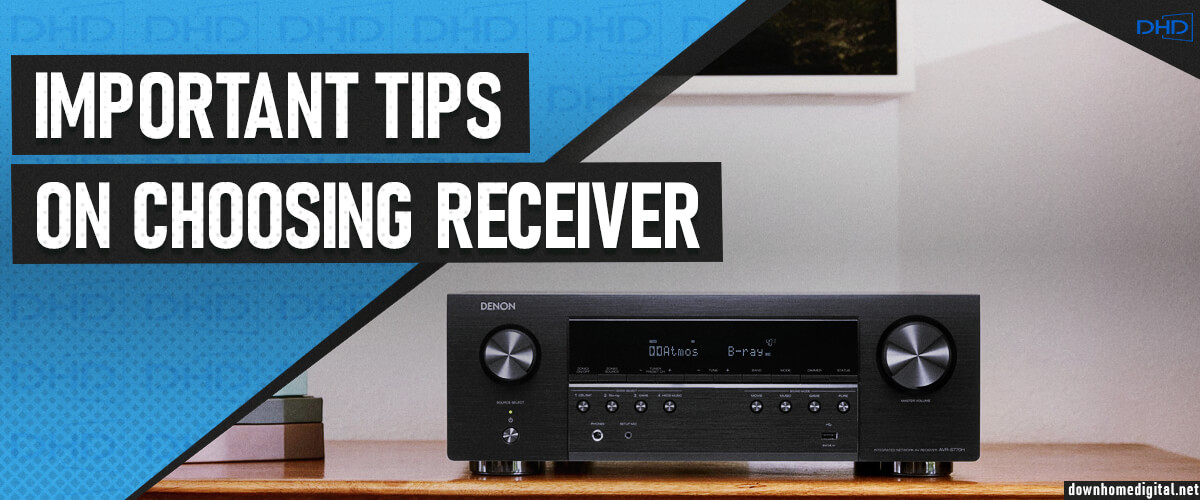
How many channels do you need
The majority of users are interested in the number of channels that a particular AV receiver boasts. Although many people do not understand the meaning of numbers and think that a larger value means it is necessarily better. So let’s get into the details.
Considering that, mind that every AV receiver provides a typical set for 5.1 surround speakers with six active channels. One is placed in the center, two on the front side, two surround speakers on the left and right, and a subwoofer. It is the most commonly used and is a pretty good configuration, which may satisfy most of the average user’s needs.
In turn, a 7.1-channel AV receiver can, among other things, reproduce sound through the rear speaker, which gives a more spacious effect as if enveloping the whole room. Also, mind that streaming services have a 7.1-channel soundtrack feature. Therefore, a 7.1-channel unit will help you create an enhanced sound with high quality and more spaciousness.
How much power do you need
One of the key acoustic parameters of the AV receiver is power. When evaluating this parameter, you should consider the area of the room to be sounded by the device and, accordingly, the power of the speaker system. In such systems, it is important to have a power reserve, i.e., to make the receiver’s power greater than the speakers’ power.
First, it allows you to minimize distortion and not use volume limits. Secondly, if you need to purchase higher-wattage speakers, the reserve will be just right for a larger space. Finally, it should be noted that the volume of the system as a whole (i.e., the level of the sound pressure created) will depend not only on the power of the amplifier and speakers but also on the speakers’ sensitivity. Thus, the same receiver may sound differently with different speakers at the same volume level.
If the room size is 30 sq.m., I (as well as many other professionals) recommend an amplification power of about 50 W (respectively, average power per 1 sq.m. should be about 1.5 W). Knowing the size of your room, you can calculate the approximate power you need. Therefore, do not look for a receiver that necessarily must be more powerful than other models. Make your decision based on the size of your room, your budget, and your acoustics.
What kinds of inputs and outputs do you need
Each person uses the receiver in completely different ways. So you can experiment and try to connect completely different devices to it, like subwoofers, speakers, projectors, etc. Fortunately, receivers always have numerous inputs and outputs, making them very convenient to use, so let’s look at them.
I’d like to tell you about HDMI – the most significant and mainstream connector in the world. It will help you do plenty of things like connecting both Blu-ray and Extended Ultra HD Blu-ray, PlayStation and Xbox, media streamers, and more. Typically, receivers have about four or five HDMI inputs and at least one output. However, this already depends on the specific model.
Availability of USB is always a huge advantage on many devices. Therefore, in AV receivers, it is also only welcomed because it allows you to play any music from a flash drive or other devices that are compatible with USB devices. Also, 99% of all receivers support Internet connection via an Ethernet cable to the device through the provided port.
Well, I definitely want to mention coaxial and optical types of connections. With their help, connect audio from DVD players, Blu-ray, and 4K Ultra HD TV.
Extra features
Additional features have always been a tremendous advantage, especially regarding receivers. Thanks to the additional capabilities provided by the manufacturer, you can greatly facilitate usage and not waste extra time on certain processes.
For example, if the receiver can be connected via Bluetooth, this is wonderful because many additional devices can be connected wirelessly, which is very convenient.
Wi-Fi connection is a guaranteed plus because you immediately have the opportunity to listen to music from such popular services as Apple Music, SoundCloud, Spotify, and so on. Accordingly, the possibility of listening online greatly simplifies your work and saves your time.
And, of course, Wireless multi-room music, with which you can “liven up” your home with music or podcasts with just one remote control or mobile application. This feature is highly valued among users as it saves time and requires less effort to prevent the unneeded hassle.
What to expect from an AV receiver under $500
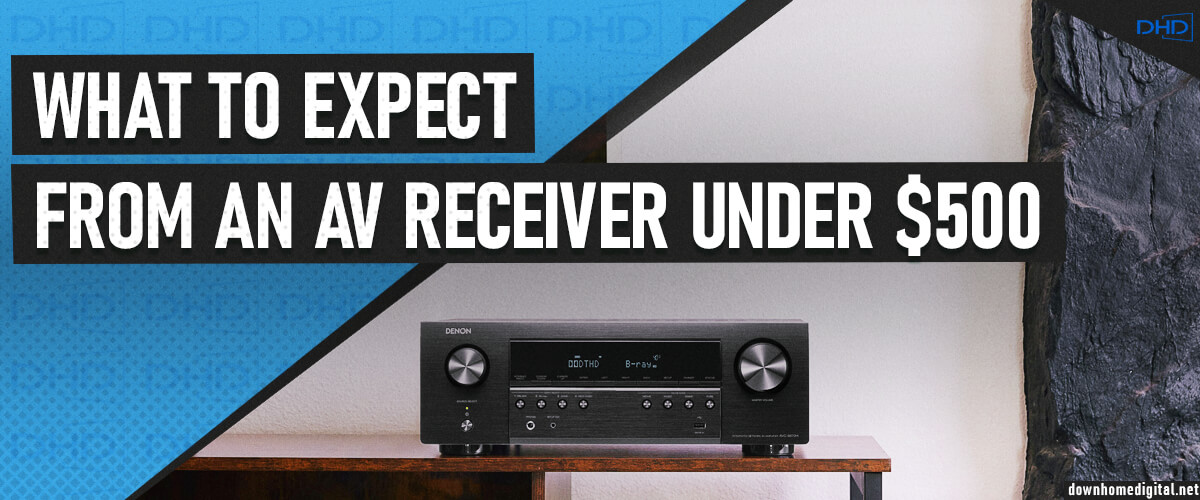
In most cases, there is nothing outstanding other than solving the basic tasks that any receiver faces. Therefore, my review is dedicated to those models that can offer something more than the standard set.
Of course, such devices cannot boast super high-quality components and super-durable materials. They will lose sound and video quality to more expensive analogs and will not have the latest innovations.
Anyway, such differences don’t mean that a receiver can’t cope with its primary task. Moreover, I believe that inexpensive receivers are a go-to choice for people who want to make their first sound surround system without going bankrupt.
How I picked and tested AVR under $500
In order to choose for you the really best receivers under $500, I did a lot of work. I went through dozens of options, compared their capabilities and technical characteristics, and, most importantly, conducted a serious analysis of the sound capabilities.
The first part of my test was dedicated to evaluating the surround sound capabilities of receivers while I was watching Star Wars: The Force Awakens.
Then I proceed with listening to music on different resources:
- Led Zeppelin – Ramble On – Spotify
- Jacky Terrasson – Reach – Tidal
- The Weeknd – The Hills – Deezer
- Bob Marley & The Wailers – Turn Your Lights Down Low – (CD player)
- Radiohead – The National Anthem – (CD player)
- Arctic Monkeys – Do I Wanna Know – (CD player)
- Mark Nauseef – With Space in Mind (CD player)
- Mahler – Symphony No.2 (CD player)
I used the following equipment for testing:
- CD player SACD 30n
- Blu-ray player Sony UBP-X700
- Speaker wire – AudioQuest Type-9
- Speakers for movie – Klipsch RP-8060FA
- Stereo speakers:
- Klipsch RP-8060FA
- KEF Q350
- DALI OBERON 5
Best AV Receiver Under $500 Reviews
Denon AVR-S670H – best overall

I’ll start my review with the Denon S670H A/V receiver, which replaced the once-popular S660H and is an improved version of the latter. I put it first on my list because I consider this model the best AVR under $500, as it combines all the basic features you need today, excellent sound quality, and durable components (compared to other models on the list). So, let’s take a closer look at it and verify my assertion.
This model has 5 channels of amplification with discrete elements that can work even with low-impedance speakers. The claimed maximum power is 75 W per channel for 8 ohms (20 Hz – 20 kHz, THD: 0.08%, 2 active channels), but I am more interested in the distortion factor here. After all, its value of 0.08% tells us that you can use the maximum volume without fear of hearing squealing or wheezing, which is typical for the segment we are considering in other models. For 6-ohm speakers, THD is worse, but the power value is higher (100W). In fact, you’ll hear the same level of clarity and volume with any speakers.
And speaking of speakers, I tested the system with Polk Audio Monitor XT60 front speakers. My room and acoustics allow me to use bulky equipment, and if you have the same, I recommend this tandem as one of the optimal I’ve heard with the Denon S670H. It’s absolutely peerless for an inexpensive setup. This combination creates a noticeable difference in the sound of the system.
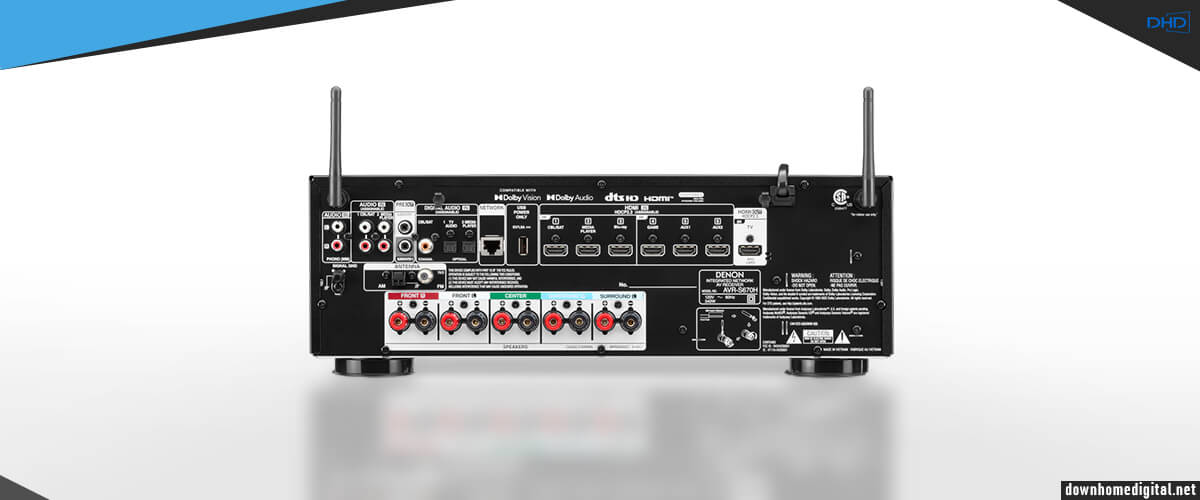
The Denon AVR-S670H has 6 HDMI inputs that support HDCP 2.3, and 3 are designed for 8K video streaming. The only HDMI output allows you to work with eARC. Let me tell you, that’s quite a lot for the segment in question. I must say that the function of upscaling to 8K resolution didn’t quite justify itself, but to be honest, I don’t use it too often, and I’m sure most of the users do, too.
Denon AVR-S670H is a 5-channel receiver, so it works only with basic surround sound formats such as Dolby TrueHD and DTS-HD Master Audio. The Audyssey MultEQ system for room sound correction, supplemented with Dynamic EQ and Dynamic Volume (volume optimization) technologies, pleased me. It calibrates the speakers connected to the AV receiver, so you don’t have to adjust the sound manually. Feel free to use it, even if you’re new to home theater. This is another plus of the S670H and a confirmation of my hypothesis.
Adding a spoonful of tar to the barrel of honey, I will say that I am not delighted with this Denon design. I had to test many brand models, and these small buttons get clogged with dirt over time. Also, Denon didn’t release an instruction manual for some reason, but the Heos app combined with the Denon app also needs tweaking, as they slow down quite a bit when working together. The remote is quite handy, though, and will save you when combined with the fairly user-friendly on-screen menus. You can also use the personal voice assistants Google Assistant or Amazon Alexa.
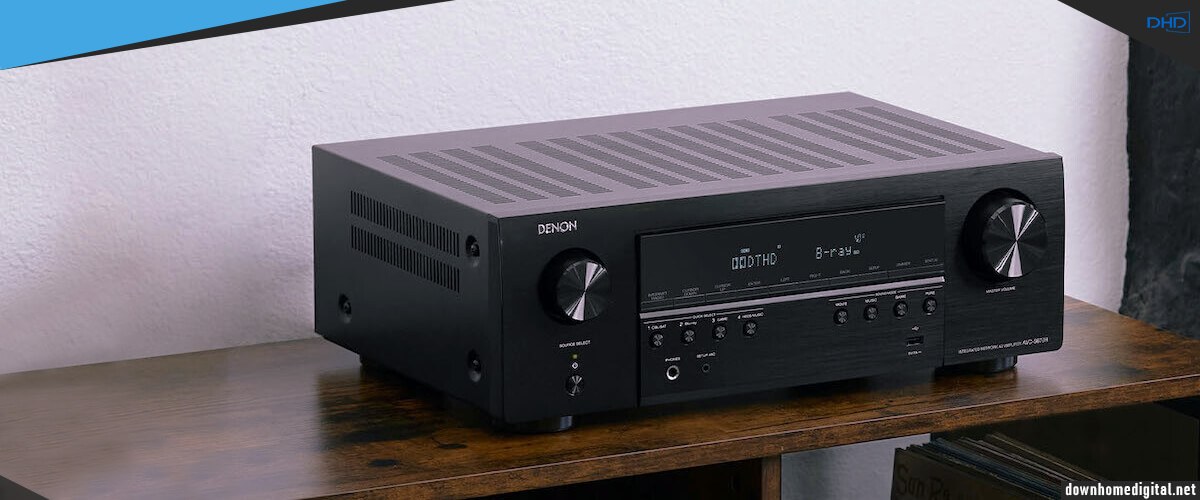
The Denon AVR-S670H has Bluetooth and Wi-Fi on board. AirPlay 2 protocol is supported, with which you can build a wireless multi-room system based on iOS devices. Moreover, the receiver can work as part of the proprietary wireless ecosystem HEOS, which allows you to manage all the devices with one program, to which you can broadcast audio from tablets and smartphones, from local networks and streaming services. And this already speaks of quite serious versatility of the S670H.
The sound of the Denon S670H is excellent for its price segment. Sure, it’s the simplest system, but I really appreciate the balanced frequencies and quality of the brand’s sound transmission, whether it’s dialog, a movie soundtrack, or distant background sounds, which is so important in conveying the atmosphere of a movie. The fact is that the manufacturer uses quite high-quality internal components, and you hear a warm, dynamic, bright sound. I really enjoyed watching The Departed with this AVR. I didn’t have to rewind unhurried dialogs to hear every word, especially taking into account specific characters, and under the soundtrack of Dropkick Murphys, I’m Shipping Up to Boston (well, who doesn’t know it), I wanted to grab the sticks and play along on the drums. I was even quite satisfied with the sound of vinyl with this device (there is MM phono input). And digital music didn’t raise any questions at all, as the pairing never failed.
The Denon S670H tops my ranking for reasons that will be appreciated by many of those who decide to buy it as their first AVR or as an upgrade to an older system. The combination of quality details, a large number of HDMI ports (6/1), quite extensive functionality for an inexpensive device, including 8K video and extensive wireless connectivity with a stable signal transmission level, where all the stated functions work as they should (except for 8K upsampling, perhaps), and most importantly – amazingly clean, high-quality warm sound, although not with huge power. I can safely recommend the receiver to those with a small room but with the ambition to have a good home theater at hand, even if it costs more than the rest of the selection. You won’t be sorry to spend an extra hundred bucks on it.
| Power |
|
| HDMI features |
|
| Video features |
|
| Network |
|
| Surround sound processing |
|
Pros
- An excellent THD of 0.08% ensures sound clarity at high volume.
- Works with 6 and 8-ohm speakers.
- More HDMI ports than other models in the rating (6/1).
- 8K support.
- Voice control and other wireless features are very stable.
- Ability to connect a vinyl turntable (MM).
- User-friendly Audyssey MultEQ calibration system that even beginners can handle.
- Excellent balance of dialog and background sound in movies.
Cons
- 8K upscaling does not justify itself.
- The application needs to be finalized.
Yamaha RX-V4A – also great
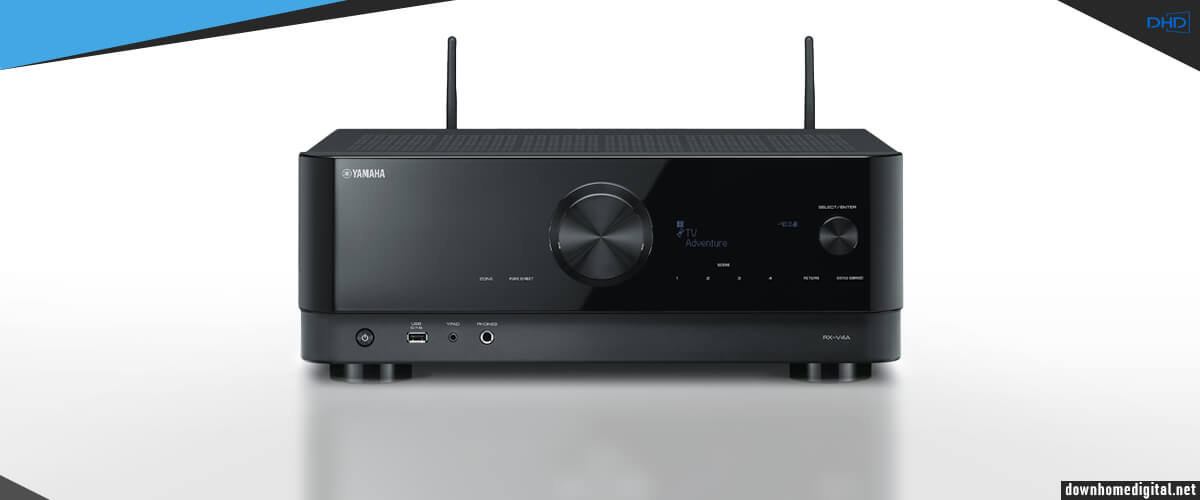
Manufacturers of electronic equipment highly rely on a recognizable design that allows a brand to be easily identified by buyers. This time, Yamaha decided to start from scratch. The RX-V4A AV receiver is designed with a new aesthetic in mind, and chances are high it will become Yamaha’s hallmark for years to come.
Since I started with the design, I’ll tell you immediately that I’m thrilled with how futuristic the RX-V4A case looks, but I’m completely disappointed with how it behaves in use. Sure, the receiver isn’t the kind of device you paw at with your fingers every day, but gloss is gloss, and while I set up the system for testing, all the glamor was stripped away as the surface captured all my fingerprints repeatedly. I also didn’t like the almost invisible display; I don’t understand why it’s there in the first place. Nevertheless, I want to give credit to the volume control, which switches the volume quite smoothly and behaves very well, not skipping levels like many inexpensive models.
Yamaha is one of those manufacturers that makes an installation procedure as intuitive as possible. You can use the unit right after connecting the source (s), speakers, and other components. The audio calibration is carried out by a home YPAO system with the supplied small microphone. I decided to try this feature, and everything runs smoothly.
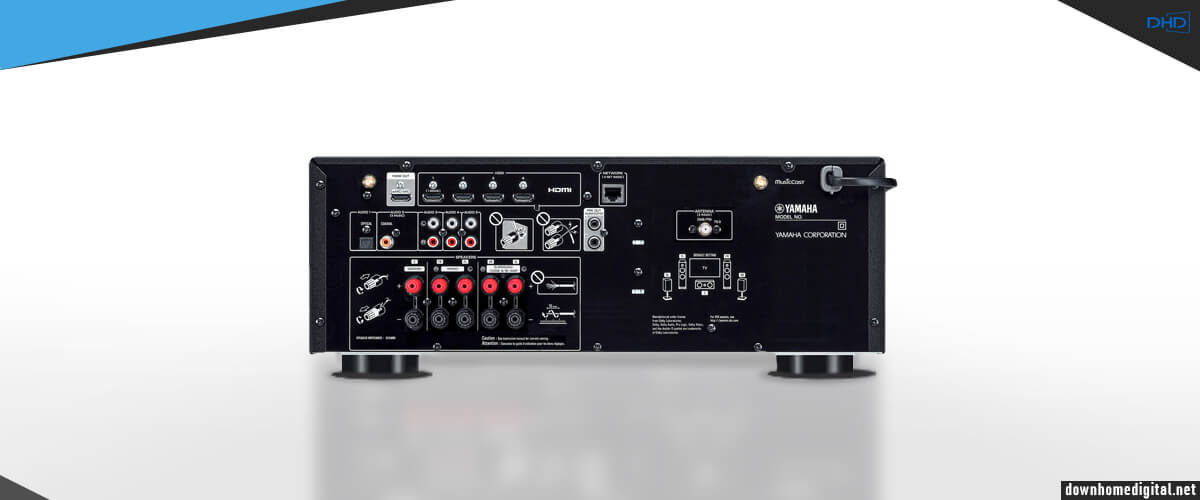
With a relatively affordable cost, Yamaha RX-V4A can be used as a core for a modern and universal home theater system. It has a 5.2-channel configuration, which can be considered an ideal option for filling medium-sized rooms with powerful sound. With a nominal power output of 80 watts per 6Ohm channel, the device can perfectly work with floor speakers manufactured by famous brands. It showed great results paired with my speakers for movie and stereo speakers.
I started the test by listening to music and exploring different modes. In Pure Direct, which means without possible processing, rendering turns out to be rather dull, devoid of life. This is acceptable for background music but not for Hi-Fi audio. When I switched to Enhanced mode, there appeared basses, but not very distinct. Everything is centered, with a few point elements to the right and left of the soundstage, but nothing happens between the center and the ends. The Neo: 6 Music mode is most interesting because it effectively distributes music to all speakers without changing voices or placing the center too far forward.
Here, it is appropriate to say that my Q Acoustics 3050 loudspeakers gave the most effective result in combination with a system based on the Yamaha RX-V4A. These front speakers give me a lot of confidence in their design, and I think they are perfect for a small room (they are quite narrow). Also, if you don’t have the option of a separate sub – oh my god, they are also great in the bass (for their price – just excellent). The speakers even externally fit perfectly into the entourage of the Yamaha model in question.
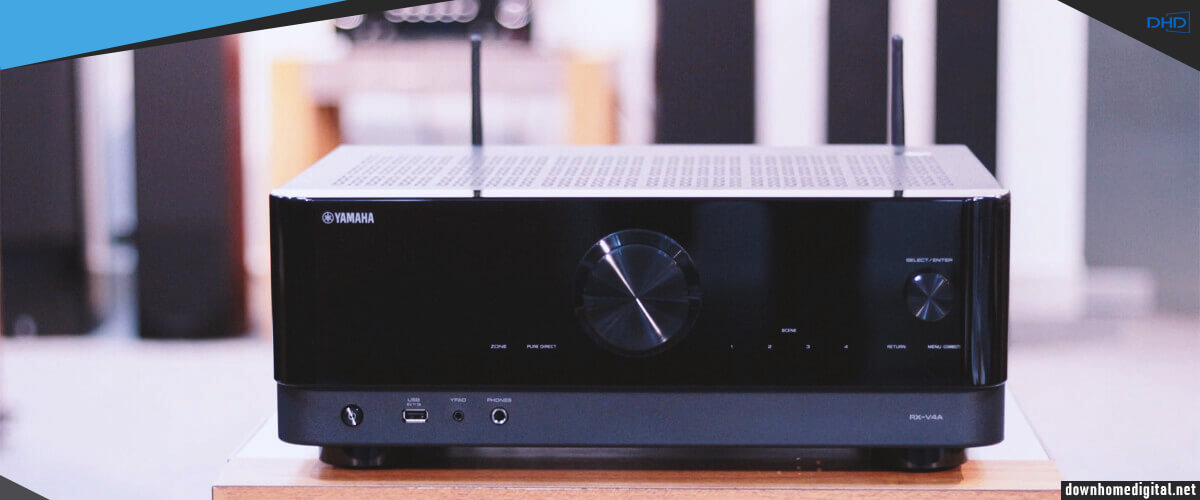
When I tested the capabilities of this receiver for movies, I took advantage of YPAO sound calibration. The process was swift. Yamaha has measured the distances and levels in my studio correctly. Unlike many competing receivers, e.g., Sony STR-DH790, it has a good center channel setup. Besides, there is a special surround sound decoding mode. Thus, the audio in movies is accurate and crisp, so you can feel the shift from one scene to another.
Many people like the crystallinity and transparency of Yamaha’s sound. I know this kind of equipment very well, and I can say that I appreciate this uniqueness in a limited way. I really like movies like Transformers with this kind of sound (you can’t fully appreciate the scraping of metal in a “warmer” version) or movies with knights’ tournaments, where every sound of the battle is also important. I also like listening to heavy genres of music, if we’re talking about stereo. But I have some questions about jazz with the RX-V4A. Although frankly speaking, considering that most of you will never touch vinyl, where warmth and authenticity are important, it is not so important. Yamaha’s sound is very good overall.
Yamaha RX-V4A is one of the best home theater receivers under $500 for users who want an easy-to-use device that doesn’t require a lengthy setup. With various modes, you can easily choose the one that suits your current situation and enjoy good sound. Although this model loses to the leader of the selection in the number of HDMI ports, in general, it retains the basic functionality that supports modern content. If you like the unique, pure, transparent sound, you will hardly want another brand of receiver in the future.
| Power |
|
| HDMI features |
|
| Video features |
|
| Network |
|
| Surround sound processing |
|
Pros
- Great presets for music and movies & DSP effect.
- Immense configuration options.
- You can control the volume of each individual speaker.
Cons
- Doesn’t support DTS: X and Dolby Atmos.
- Pitifully weak if you want to play rock or symphony orchestras.
Sony STR-DH790
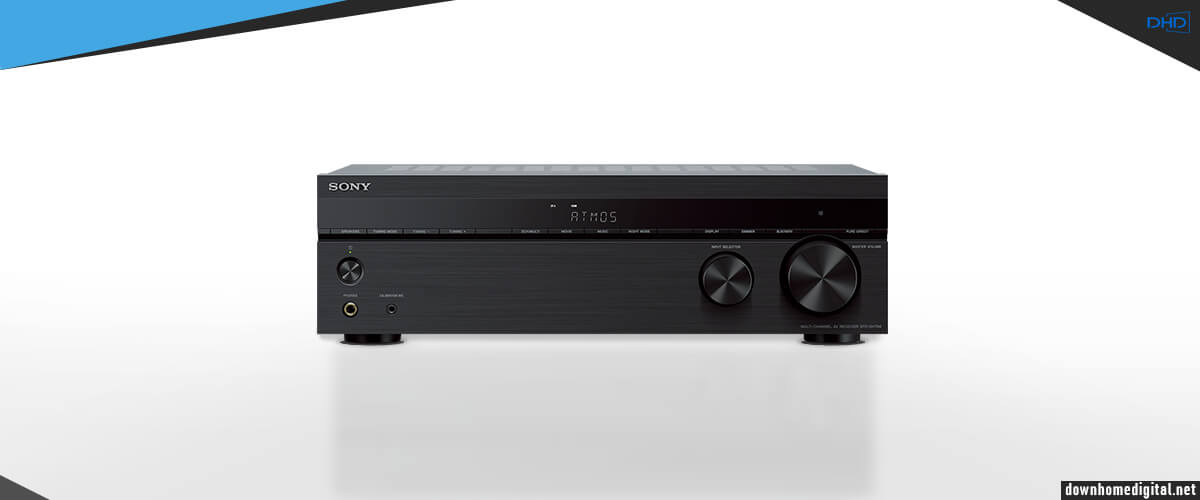
Sony is known for producing electronics aimed at people with different financial capabilities, and I decided to take a closer look at the DH790 low-cost 4K receiver. This is a 7.2-channel with the power output of 90 watts per channel (6 Ohms). It doesn’t matter when you will locate the unit and what equipment you’ll pair it with – it works seamlessly with the speakers and accurately emulates the surround sound.
Of course, if you buy a receiver at a price lower than the 5-channel leaders of my rating while getting 7 channels of amplification, you can’t count on the same level of quality of the device. In the Sony DH790, one of the compromises is the plastic body and inexpensive internal components. And if you can’t feel the latter, the case evokes a feeling of cheapness even at first sight. And the round regulators don’t inspire confidence because when you touch them, you can feel a fit that is not too tight. It feels like they will fall off quickly. So try to use a remote control. Nevertheless, these are quite acceptable disadvantages for a budget receiver.
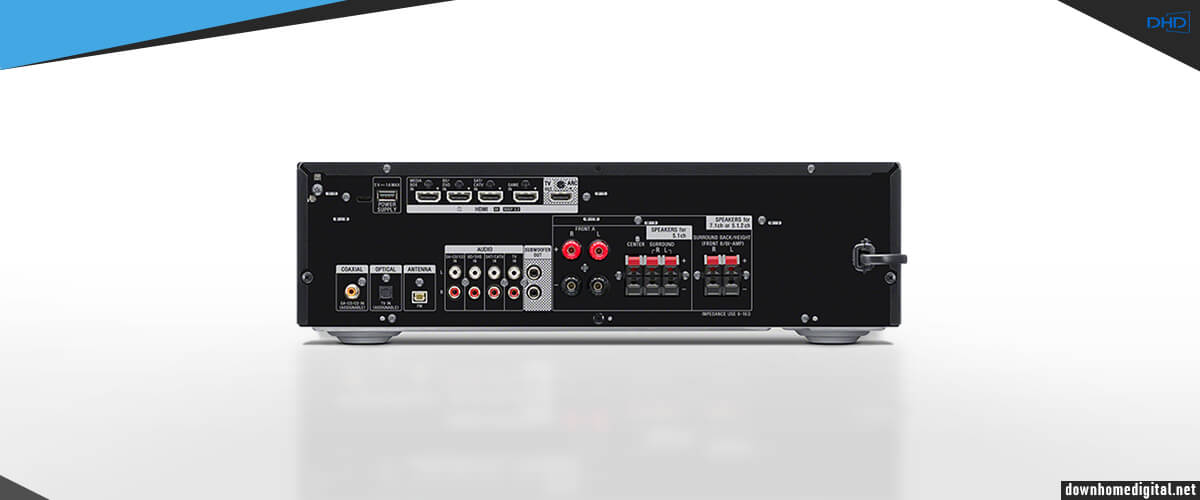
The model has 4 HDMI inputs that support signal quality up to 4K at up to 60Hz, HLG, and Dolby Vision. The DH790 lacks analog video outputs, but there are four analog audio inputs, coaxial and optical digital audio outputs. Of course, this is a serious shortcoming considering that Denon AVR-S750H and Yamaha RX-V4A offer more, but this set of ports is sufficient for small and medium-sized systems. Actually, that was enough for my test.
Another peculiarity you need to take into consideration is the absence of Zone 2 and Wi-Fi connection. If that is crucial for you, opt for the leader of this review. Fortunately, the manufacturer preserved Bluetooth, so you can still enjoy wireless streaming.
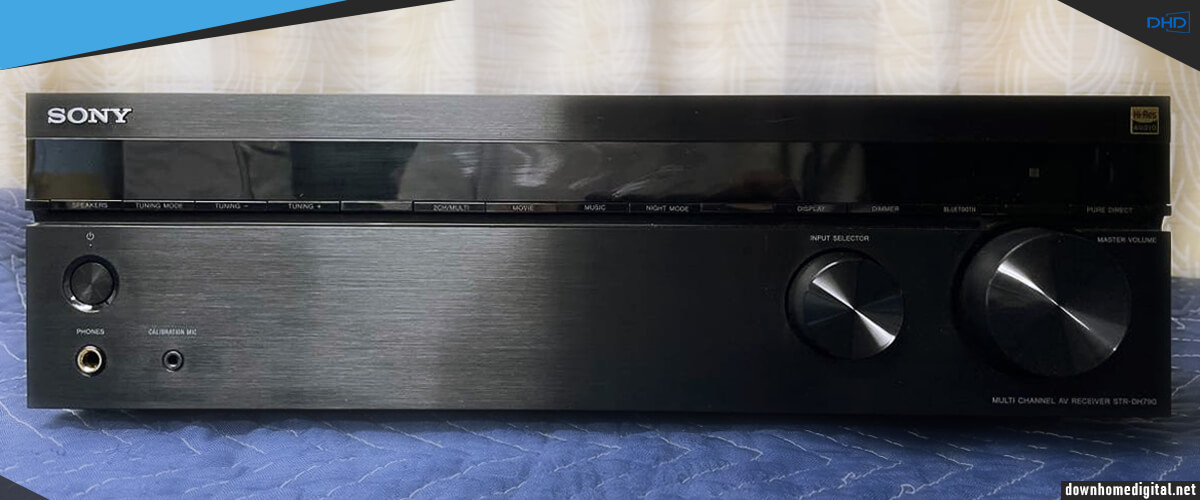
At the first launch, I saw a clear on-screen menu with 5 basic modes. That’s a decent newbie-friendly move, as finding a proper mode for your current activity is a breeze. First, I chose the “Watch” mode to understand whether it can produce a great home theater sound. It seemed that the sound was slightly muffled, so I used an integrated auto-calibration to fix it. After the process was over, I returned to the movie and heard a genuine surround sound.
While listening to songs, I switched to the “Listen” mode. Thus, I could effortlessly listen to music from different sources, and the system sounded great with all genres. I like that basses were well pronounced, though most budget-friendly models can hardly cope with such a load.
Overall, the Sony DH790 is just a good budget surround sound receiver. With 5 built-in modes and auto-calibration, you can easily customize this receiver to your home without time-consuming manipulation and simply listen to a relatively sound-enhanced version of content from the TV. I think this is a great receiver at a price below 500 for first-time users. And if you’re not chasing brands, pathos, or show-offs, it’s fine as entertainment, as it’s equally effective at watching movies and listening to music for the unsophisticated listener. Think in advance if you need Wi-Fi or are willing to pay more for this perk.
| Power |
|
| HDMI features |
|
| Video features |
|
| Network |
|
| Surround sound processing |
|
Pros
- 4K pass-through is ideal.
- You can adjust any of the speaker levels with the amp button right on the display.
- Decodes the newer audio formats such as ATMOS.
Cons
- Doesn’t support HDCP2.3.
- No built-in Wi-Fi and streaming services.
- Cheap plastic casing and low-quality internal components.
Onkyo TX-SR494
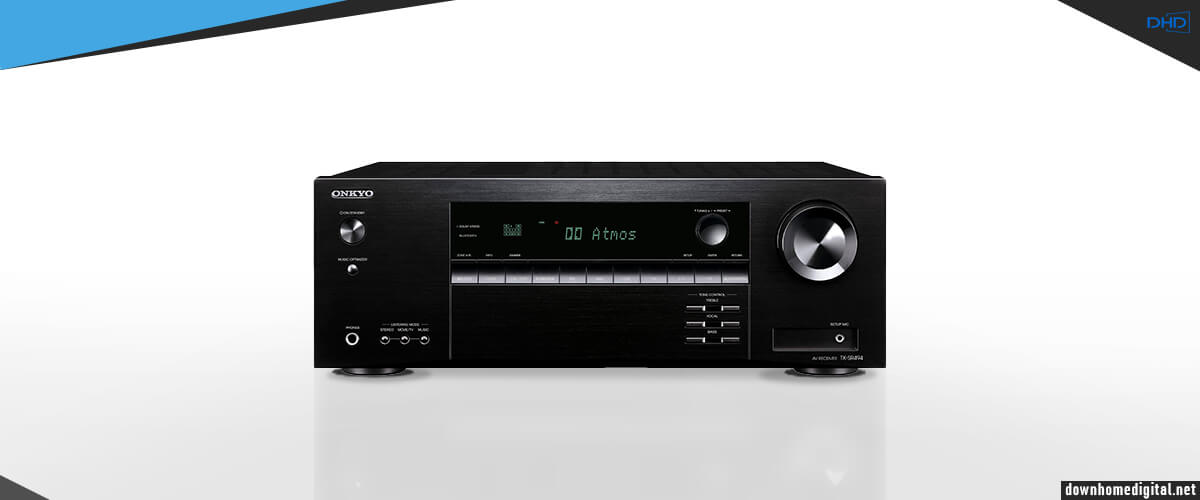
If you are looking for the centerpiece of your home theater system, I highly recommend considering this budgetary receiver. Onkyo TX-SR494 has a seven-channel configuration and is supplied with discrete power amplifiers capable of delivering 80 watts/8 Ohms per channel.
In appearance, the receiver resembles the leader of my selection, Denon S670H. The TX-SR494 has a classic type of design with a viewable LCD, large controls that feel smooth in the hand, and push-button controls. But on close contact, I can feel the cheapness of the case, which is quite satisfactory for its price. Considering the features the manufacturer has crammed into the AVR, it’s quite acceptable.
The AV receiver has four HDMI inputs and one output, capable of transmitting 4K UHD signals. The manufacturer decided to abandon the component video inputs and outputs, which simplified the placement of connectors on the rear panel. The device also has three analog and two digital inputs.
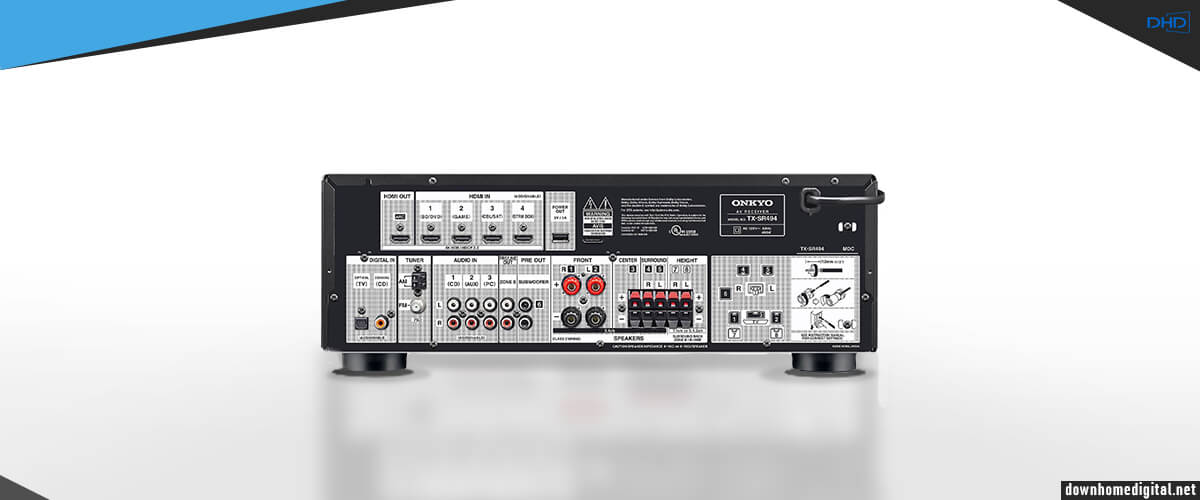
The model comes with decoders for all popular surround sound formats, including Dolby Atmos and DTS: X. Moreover, you can take advantage of Dolby Atmos Height Virtualizer and DTS Virtual: X modes to enjoy encompassing sound without adding ceiling speakers to your setup. For automatic surround sound quality, the TX-SR494 is equipped with AccuEQ technology with extensions for subwoofer and 3D formats.
While watching the movie, I felt the advantages of such surround sound-focus the manufacturer sticks to. The sound transition from scene to scene was smooth and gradual, without abrupt highs and lows. However, sometimes dialogs merge with surround noise, so catching separate words may be difficult. So, Onkyo TX-SR494 is significantly inferior to Denon S670H and Yamaha RX-V4A in terms of sound signal transmission, and you will have to choose between really good sound and advanced functionality. For example, the model in question is the only one on the list that offers powered stereo audio in zone 2. And that can make all the difference if you’re looking for a multi-room receiver on a tight budget.
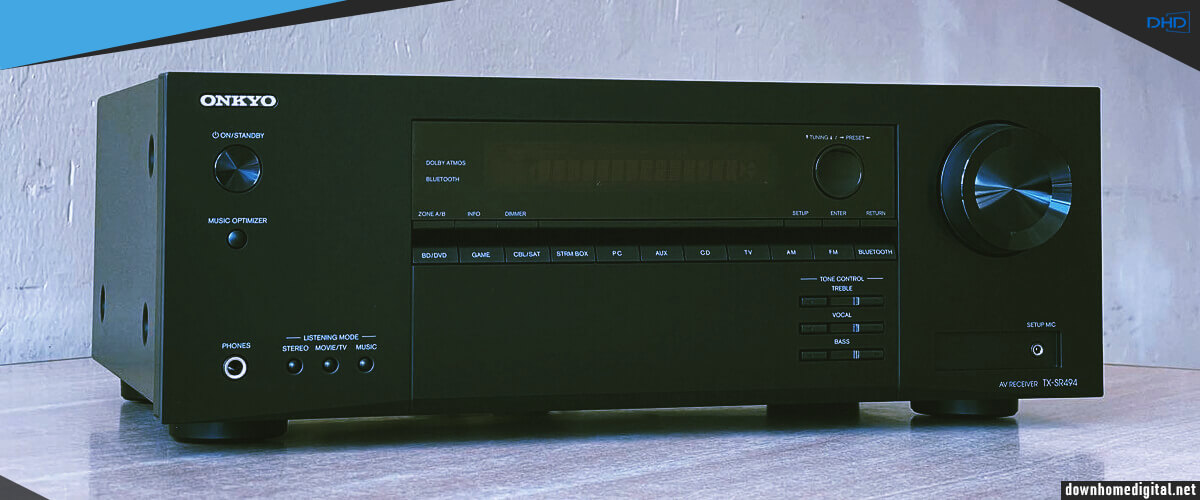
As for audio playback, the receiver lags behind its competitors as well. I understand that it is initially designed for a home-theater system, so it is strange to expect much if you are after authentic stereo sound. Though it didn’t show outstanding results when I was streaming from Deezer, Spotify, and other platforms, I reckon the quality of audio and the overall functionality fully correspond to the price asked.
Built with surround sound in mind, the Onkyo TX-SR494 can be a worthy component of your home theater system. Sure, it’s not as efficient when listening to music, doesn’t have built-in Wi-Fi, and doesn’t have as robust a design as the Denon S670H and Yamaha RX-V4A selection leaders. Still, it’s a compromise you’ll have to make if you want to stay within budget and end up with a 7-channel receiver with Dolby Atmos and Zone 2 (which the 7-channel Sony STR-DH790 won’t give you). Dive into learning your specific preferences before you buy, and evaluate what you will actually use. Sometimes, the tradeoffs are just on paper. In reality, you simply won’t use half of the tricked-out features.
| Power |
|
| HDMI features |
|
| Video features |
|
| Network |
|
| Surround sound processing |
|
Pros
- Awesome sound and impressive HDR enhancement.
- AccuEQ Room Calibration works flawlessly.
- Has an audio select button to select my onboard sound card or graphics card.
Cons
- Doesn’t support HDMI eARC.
- No built-in Wi-Fi and streaming services.

